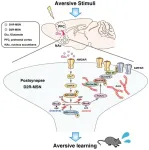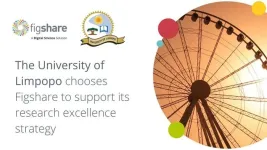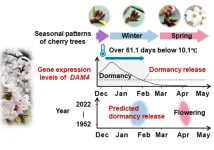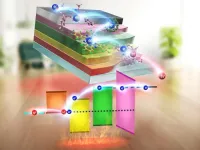One of the things that makes brains so incredibly difficult to understand is their ability to adjust and adapt. Our learning experiences can set off complex signaling cascades that reshape neurons—and their synaptic connections—at the cellular level. For example, in mammals, scientists have established that activation of the N-methyl-D-aspartate receptor (NMDAR) and the ensuing calcium ion (Ca2+)-dependent signaling cascade is essential for postsynaptic remodeling and learning. As one might reasonably expect, problems with NMDAR have been linked to neuropsychiatric disorders, including epilepsy, schizophrenia, autism, and intellectual disabilities.
Understanding the functions of NMDAR is therefore key to understanding many neuropath ologies and developing treatments. Unfortunately, research in this field has been challenging because of the complexity of how NMDAR causes some of its downstream effects. More specifically, NMDAR activation triggers Ca2+-dependent kinases, such as CaMKII, that phosphorylate other target proteins. Phosphorylation is a chemical process that modifies proteins, acting as a molecular switch to turn various cellular functions on or off. Although these modifications are central to the functions of NMDAR, studying phosphorylation events and their roles in signaling pathways has proven difficult.
At Fujita Health University in Japan, a research team led by Professor Kozo Kaibuchi has been pioneering a novel screening method to study phosphoproteomics—the comprehensive analysis of phosphorylated proteins. In a recent paper published in Science Signaling on 10 September 2024, they employed this technique to shed light on how intracellular NMDAR signaling regulates synaptic plasticity and learning through phosphorylation events. Other members of the team included Senior Assistant Professor Yasuhiro Funahashi, Dr. Rijwan Uddin Ahammad, Professor Taku Nagai and Professor Takayuki Yamashita from Fujita Health University, Professor Yukihiko Noda from Meijyo University, Professor Kiyofumi Yamada from Nagoya University and Professor Shigeo Uchino from Teikyo University.
The abovementioned method is called kinase-oriented substrate screening (KIOSS), which uses affinity beads coated with domains that bind to phosphorylated serine and threonine residues. Using KIOSS, the researchers investigated phosphorylation events downstream of NMDAR in isolated mice brain slices of the nucleus accumbens (NAc), a key brain structure that is involved in emotional responses, motivation, and various forms of learning. Using an NMDAR agonist to induce a higher Ca2+ influx in neurons, they screened proteins phosphorylated by CaMKII.
The researchers found 194 proteins that fit this criterion, but they focused specifically on Rho GTPase regulators, which are known to play a crucial role for synaptic remodeling in learning. Interestingly, they observed that phosphorylation of a specific regulator called ARHGEF2 led to the activation of RhoA, which in turn activated Rho-kinase/ROCK, a protein necessary for proper neuronal development and structure.
The team decided to delve deeper into the effects of ROCK activation in this context, as Prof. Kaibuchi explains: “ROCK inhibition impairs memory formation, including long-term spatial memory in the hippocampus and fear conditioning memory in the lateral amygdala. However, it remains unclear whether ROCK regulates aversive learning in the NAc. Thus, we used mice in a passive avoidance test, a fear-motivated test classically used to assess memory in laboratory animals, to examine whether ROCK regulates aversive learning.” The researchers ultimately identified 221 candidate substrates of ROCK, and demonstrated via in vivo experiments that aversive stimuli activated the CaMKII–RhoA–ROCK pathway. Inhibiting this pathway chemically or through genetic modifications resulted in impaired aversive learning, cementing the results.
Worth noting, the researchers put all the data derived from this study in a publicly available database they had previously developed. “The phosphorylated proteins and their phosphorylation sites identified in this work are registered in our KANPHOS database,” mentions Prof. Kaibuchi, “KANPHOS provides extensive data on different aspects of phosphorylation in the brain, including extracellular and intracellular signaling pathways, phosphorylated proteins, phosphorylation sites, responsible kinases, mouse models, and related behaviors and diseases. These data and the KANPHOS database itself form a useful resource for elucidating the mechanisms of NMDAR signaling in the brain.”
Taken together, the contributions of this study could be foundational to achieve a better understanding of many neuronal diseases. “The signaling pathways downstream of NMDAR involved in aversive learning we identified may provide insights into the mechanisms underlying the pathophysiology of psychiatric disorders such as schizophrenia,” concludes Prof. Kaibuchi. “The next step is to explore how these findings can contribute to the development of treatments aimed at ameliorating symptoms of these disorders,” he adds, optimistic about the future.
Let us wish them the best of luck in their endeavors so that the burden of these challenging diseases can be lessened and people suffering from them enjoy a better quality of life.
***
Reference
DOI: 10.1126/scisignal.ado9852
About Fujita Health University
Fujita Health University is a private university situated in Toyoake, Aichi, Japan. It was founded in 1964 and houses one of the largest teaching university hospitals in Japan in terms of the number of beds. With over 900 faculty members, the university is committed to providing various academic opportunities to students internationally. Fujita Health University has been ranked eighth among all universities and second among all private universities in Japan in the 2020 Times Higher Education (THE) World University Rankings. THE University Impact Rankings 2019 visualized university initiatives for sustainable development goals (SDGs). For the “good health and well-being” SDG, Fujita Health University was ranked second among all universities and number one among private universities in Japan. The university became the first Japanese university to host the "THE Asia Universities Summit" in June 2021. The university’s founding philosophy is “Our creativity for the people (DOKUSOU-ICHIRI),” which reflects the belief that, as with the university’s alumni and alumnae, current students also unlock their future by leveraging their creativity.
Website: https://www.fujita-hu.ac.jp/en/index.html
About Senior Assistant Professor Yasuhiro Funahashi from Fujita Health University
Dr. Yasuhiro Funahashi obtained a PhD in Medicine from the Department of Cell Pharmacology, Nagoya University Graduate School of Medicine in 2014. He joined Fujita Health University in 2020. His research focuses on neural signaling, and his goal is to elucidate the pathogenesis of neuropsychiatric disorders, including schizophrenia, depression and addiction, to ultimately develop treatments for them.
About Dr. Rijwan Uddin Ahammad from Fujita Health University and University of Southern California
Dr. Rijwan Uddin Ahammad earned his PhD in Medicine from the Department of Cell Pharmacology at Nagoya University Graduate School of Medicine in 2022. He began his research career at Fujita Health University in 2021 and is currently a postdoctoral fellow at the Alzheimer’s Therapeutic Research Institute, University of Southern California. His research focuses on alterations in neuronal signaling during neurodegenerative diseases, with the goal of developing therapeutic interventions for dementia patients.
About Professor Kozo Kaibuchi from Fujita Health University
Prof. Kozo Kaibuchi graduated in 1980 as a medical doctor from Kobe University. He continued his biochemistry training in the same laboratory during his M.D./Ph.D. course, based on protein kinase C research, and received his degree in 1984. In 2021, he joined Fujita Health University to focus on clarifying the molecular mechanisms underlying higher brain functions. Recently, he developed a novel phosphoproteomic approach that comprehensively screens for substrates of protein kinases to analyze how neurotransmitters regulate neuronal excitability and emotional behaviors. Based on this approach, he also constructed a kinase-associated neural phospho-signaling database. He received the Tokai Yomiuri Medical Award (2008), the Tokizane Memorial Award (2009), the Chunichi Cultural Award (2011), the Ebashi Memorial Award (2015) and a Medal of Honor with Purple Ribbon (2017).
Funding information
This work was supported by the following funding sources: AMED, Grant Numbers JP19dm0207075, JP21wm0425017 and JP24tm0524001; JSPS KAKENHI, Grant Numbers JP17H01380, JP18K14849, JP21K06428, and JP24K02138; Uehara Science Foundation, Takeda Science Foundation, Hori Sciences and Arts Foundation, and JST FOREST, Grant number JPMJFR204H. This work was also supported by the Collaborative Research Project (2011-2302) of the Brain Research Institute of Niigata University.
END








